Methi dal is a delicious, healthy and comforting dish made with fresh fenugreek leaves, pigeon pea lentils, onions, tomatoes, spices and herbs. The vast Indian cuisine has this recipe made in different ways. I share a North Indian style of this dish. But one of the well-known variation is from Andhra cuisine and known as Menthi Kura Pappu that is made with different combinations of herbs and spices. This methi dal makes for a nutritious meal paired with roti, paratha or steamed rice or cumin rice. A vegan dish.
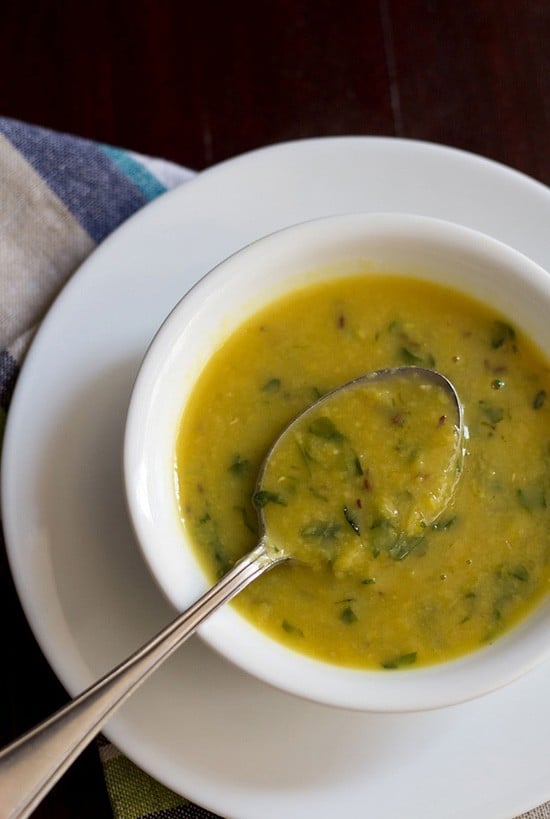
In Indian vegetarian cuisine we combine various greens with lentils. They can be made into a sauteed dry dish or like a lentil curry. E.g. Dal Palak or Shepu Bhaji.
This is one such recipe of combining the goodness of fenugreek leaves and lentils. Dal is a staple at home thus I make various unique dishes with them so that the family does not get bored with lentils.
In this recipe, I have used tuvar dal (pigeon pea lentils), but you can also make this dal methi with moong lentils, masoor dal and chana dal (bengal gram/split chickpea). You can also use a combination of two to three lentils.
The slight bitterness of the fenugreek leaves gets balanced with the subtle sweetness of the pigeon pea lentils (arhar dal). If the fenugreek you get is too bitter, then just sprinkle some salt and keep it aside for 15 to 20 minutes. Squeeze the leaves and then rinse them in water. Then add these leaves to the tempering.
I feel this is a good way to include greens in your diet and make your simple dal or curry more nutritious and healthy. Many times I add fresh greens like spinach, fenugreek, dill leaves, kale, malabar spinach and amaranth to various lentils.
You can serve methi dal with rice, roti or chappati along with raita, salad, masala papad and some pickle.
How to make Methi Dal
Cooking lentils
1. Pick, rinse 1 cup arhar dal (tuvar dal or pigeon pea lentils) a couple of times in fresh water.
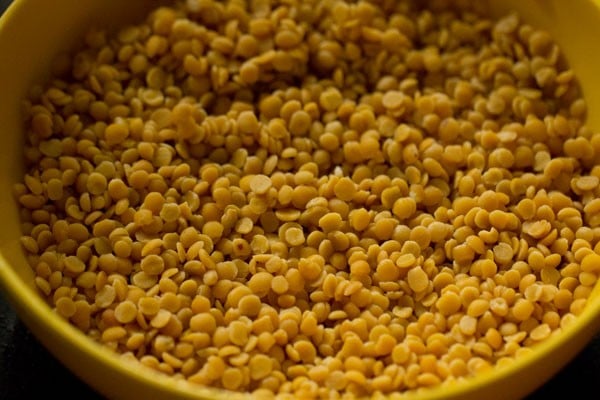
2. Add the rinsed lentils + ½ teaspoon turmeric powder + 2.5 cups water in a 3 litre pressure cooker.
You can also cook the lentils in a pan or in the Instant pot using required amount of water.
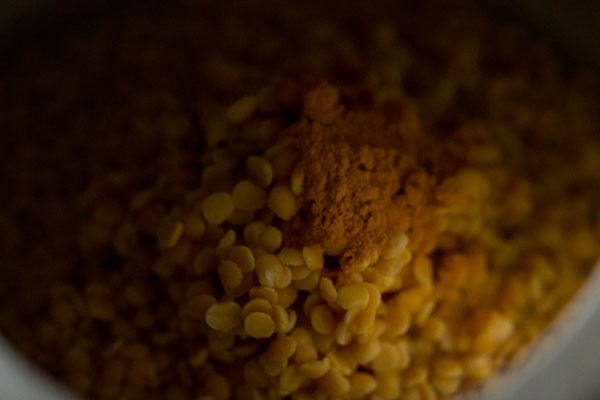
3. Pressure cook the lentils on medium to medium-high heat for 8 to 10 whistles or more till the lentils are cooked thoroughly and softened.
When the pressure settles down naturally in the cooker, then only open the lid. Mash the lentils lightly with a spoon or wired whisk and keep aside.
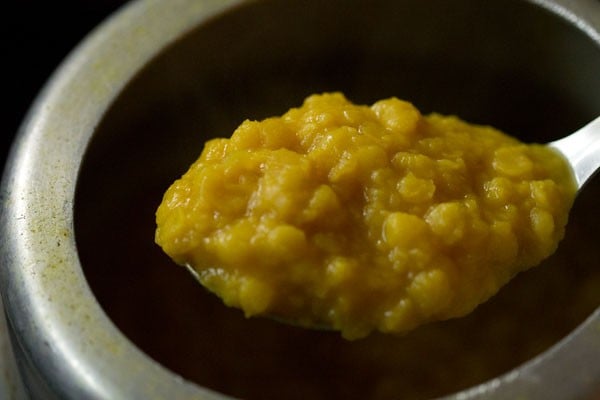
4. Heat 3 to 4 tablespoons of oil in a pan. When the oil becomes medium hot, then add 1 teaspoon cumin seeds and allow them to splutter.
You can also use ghee instead of oil for a richer taste and aroma.
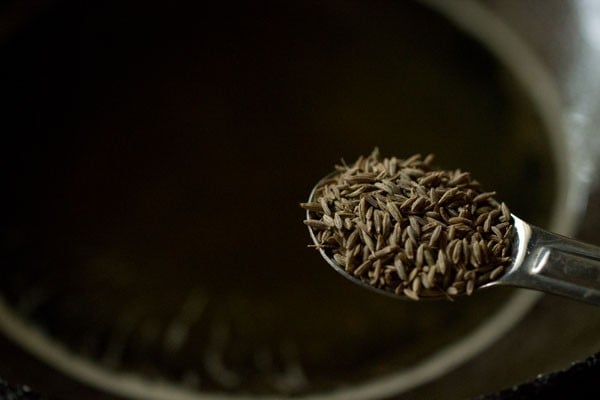
5. Then add 1 small to medium-sized onion (finely chopped), ½ inch ginger (finely chopped), 5 to 6 garlic (finely chopped or crushed) and 2 to 3 green chilies (slit or sliced).
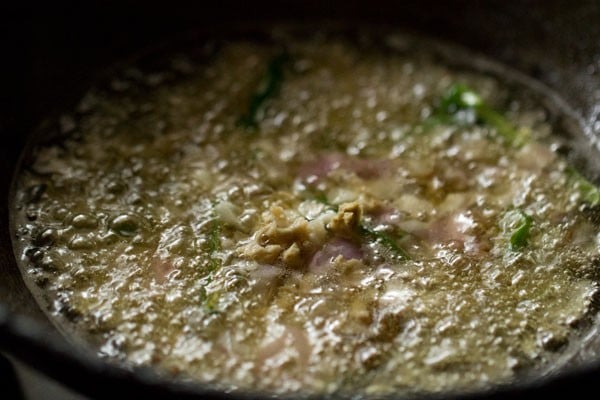
6. Next add 1 to 2 dry red chilies (halved and seeds removed). Saute stirring often till the onions become translucent.
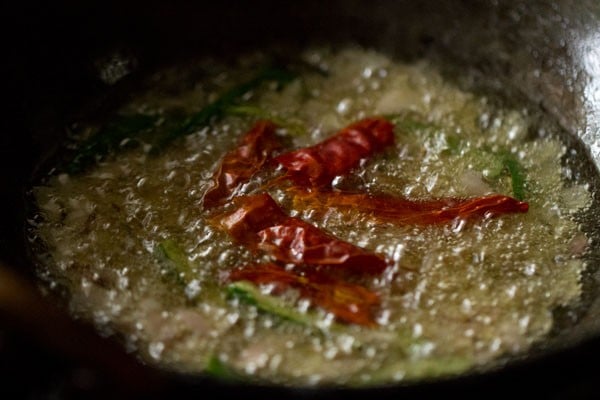
7. Then add 1 small to medium-sized tomato (finely chopped).
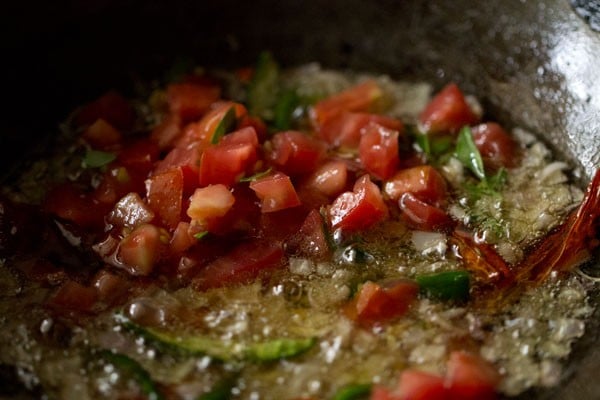
8. Stir and mix very well.
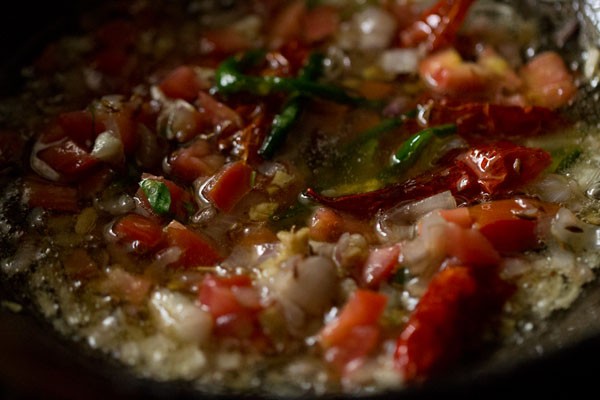
9. Add ½ teaspoon red chili powder or cayenne pepper and a pinch of asafoetida (hing). Stir and saute for 1 to 2 minutes.
To make it gluten-free omit adding asafoetida or use the one packaged as gluten-free asafoetida.
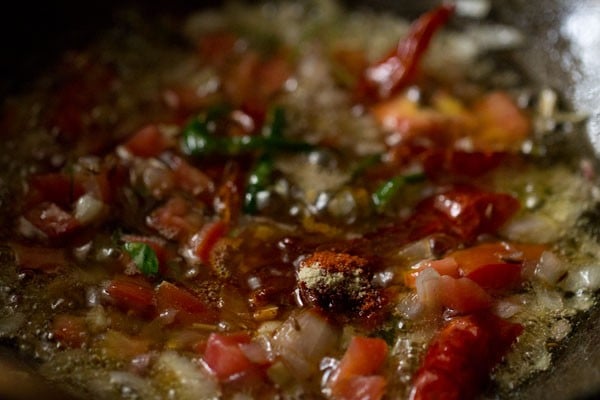
10. Then add 1 cup tightly packed fresh fenugreek or methi leaves (chopped).
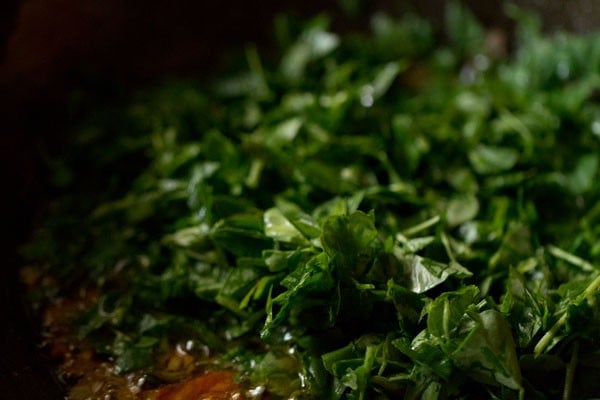
11. Stir and mix very well.
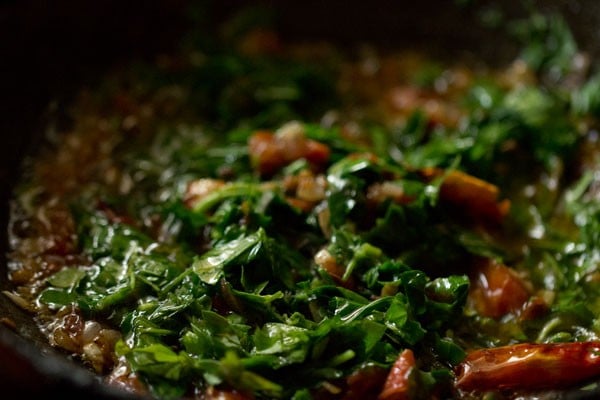
12. Saute the whole mixture, till the fenugreek leaves wilt and you see oil releasing from the sides of the pan.
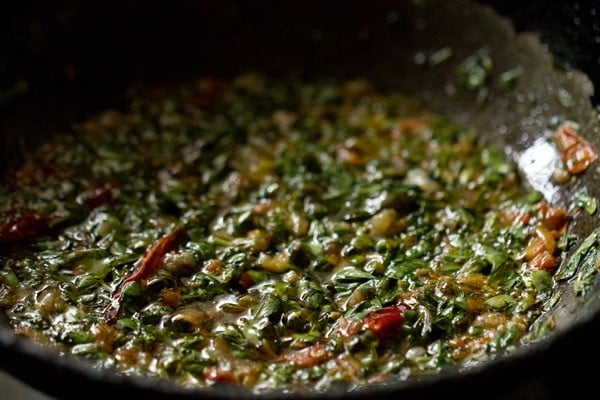
13. Then add the cooked arhar dal.
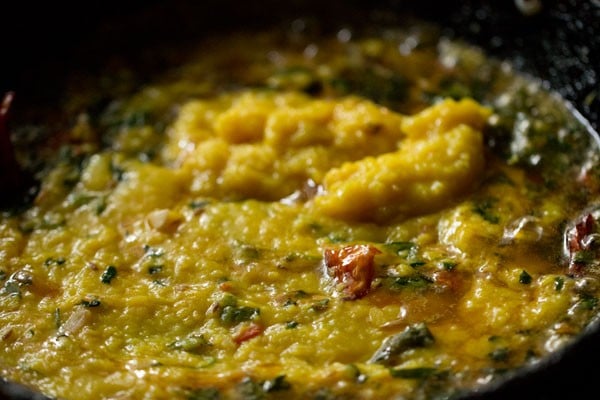
14. Add 1 to 1.25 cups water. You can add less or more water as per the consistency you want in the methi dal. If you want a thick dal, then skip adding water and just mix the dal with the rest of the tempering mixture.
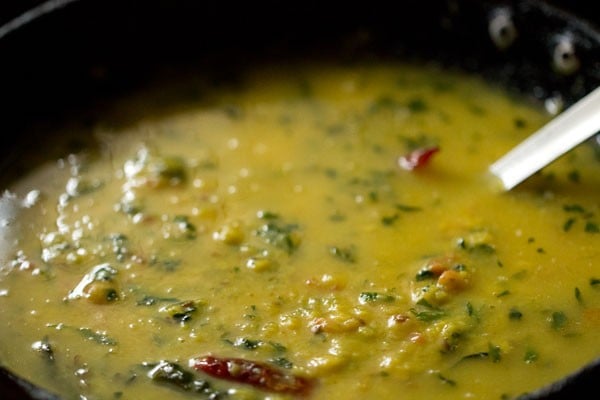
15. Then add salt as required.
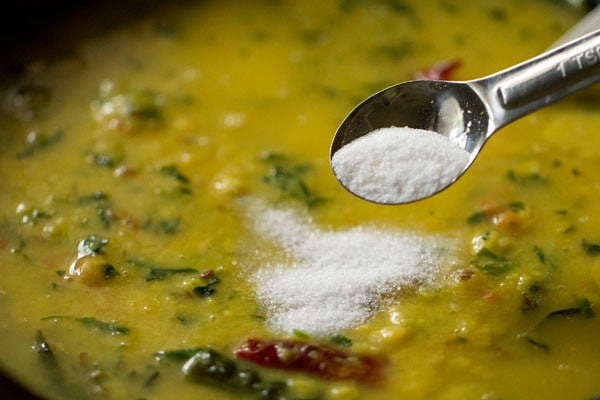
16. Stir very well and simmer the dal for 7 to 8 minutes.
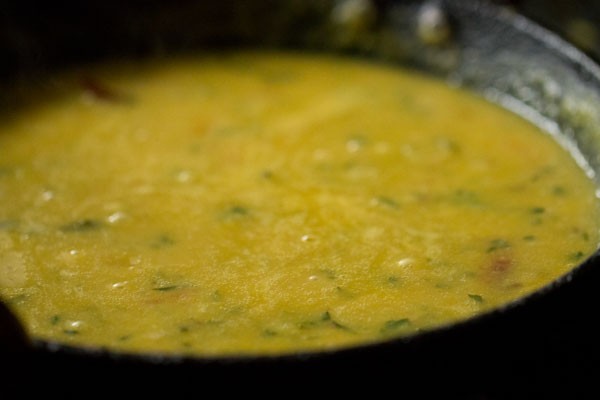
17. Lastly add ½ teaspoon garam masala powder and mix well again. Check the taste and add more salt if required.
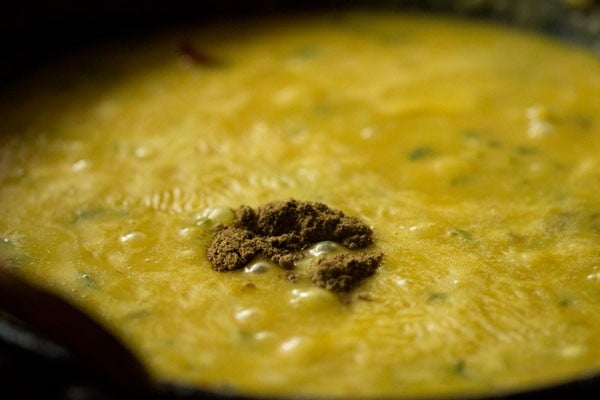
18. Serve methi dal hot or warm with some steamed rice or soft chapatis or paratha.
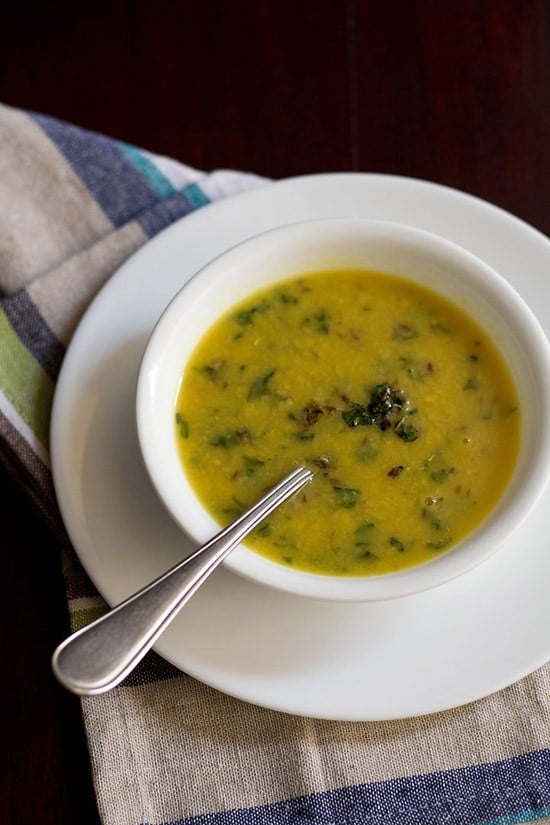
More tasty dal recipes for you:
Please be sure to rate the recipe in the recipe card or leave a comment below if you have made it. For more vegetarian inspirations, Sign Up for my emails or follow me on Instagram, Youtube, Facebook, Pinterest or Twitter.
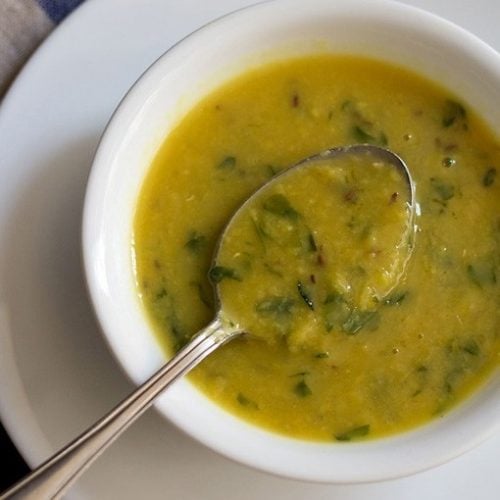
Methi Dal
Ingredients
For pressure cooking lentils
- 1 cup arhar dal (tuhar dal or pigeon pea lentils) or 200 grams arhar dal
- 2.5 cups water for pressure cooking the lentils
- ½ teaspoon turmeric powder (ground turmeric)
For tempering methi dal
- 3 to 4 tablespoons oil or ghee (clarified butter)
- 1 teaspoon cumin seeds
- 1 small to medium onion, finely chopped
- ½ inch ginger – finely chopped
- 5 to 6 garlic – finely chopped or crushed
- 2 to 3 green chilies – slit
- 1 to 2 dry red chilies – deseeded and broken
- 1 small to medium tomato, finely chopped
- ½ teaspoon red chili powder or cayenne pepper
- 1 pinch asafoetida (hing) – optional
- 1 cup tightly packed fresh fenugreek or methi leaves – chopped
- 1 to 1.25 cups water to be added later
- ½ teaspoon Garam Masala
- salt as required
Instructions
Pressure cooking lentils
- Pick, rinse arhar dal (pigeon pea lentils) a couple of times in fresh water. Drain all the water.
- Add the rinsed lentils, turmeric powder and water in 3 litre pressure cooker. You can also cook them adding water as required in a pan or Instant pot.
- Pressure cook the lentils on medium to medium high heat for 8 to 10 whistles or more till the lentils are cooked thoroughly and softened.
- When the pressure settles down naturally in the cooker, then only open the lid. Mash the lentils lightly with a wired whisk or spoon and keep aside.
Making methi dal
- In a small frying pan, heat oil. Keep the heat to medium. Add the cumin seeds and fry them till they crackle.
- Then add onions, garlic, ginger, red chilies and green chilies.
- Saute for a couple of minutes stirring often till the onions turn translucent.
- Add the tomatoes, asafoetida, red chili powder and saute for 1 to 2 minutes.
- Add the chopped methi leaves. Saute till the methi leaves wilt and oil leaves the sides of the mixture,
- Pour this mixture in the dal or add the cooked dal to this tempering mixture.
- Add water and salt as required. You can add water depending upon the consistency you want.
- Stir very well and simmer the dal for 7 to 8 minutes more.
- Lastly add garam masala powder and mix well. Check the taste and add more salt if needed.
- Serve dal methi steaming hot with steamed rice or cumin rice or roti or paratha.
Notes
- Use fresh and tender methi leaves. If the fenugreek leaves are very bitter then first chop them. Rub and mix some salt on them and set aside for 10 to 15 minutes. Squeeze these leaves to remove the bitter juices. Rinse with water once and then drain any extra water. Now you can use them in the recipe.
- For the lentils you can use a variety like chana dal, masoor dal, moong dal, arhar dal or a mix of any of these. Just remember the cooking time will vary. E.g. chana dal will take more time to cook than other lentils.
- This is not a spicy version. To make it spicy add more red chili powder or green chilies.
- For a richer and fragrant methi dal include ghee instead of oil.
- To enjoy the dal for its best flavor and taste eat it hot after it is prepared. On cooling or resting the consistency will thicken and the taste also changes.
Nutrition Info (Approximate Values)
This Methi Dal recipe post from the blog archives (first published in August 2013) has been updated and republished on July 2021.
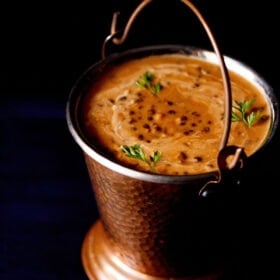
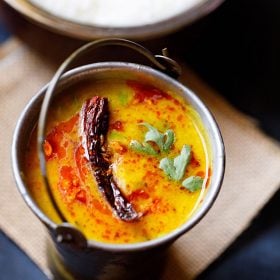
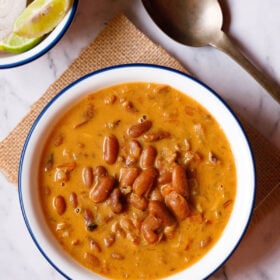
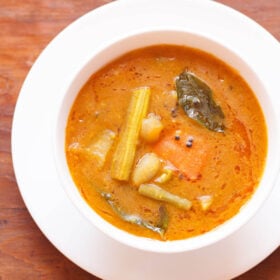








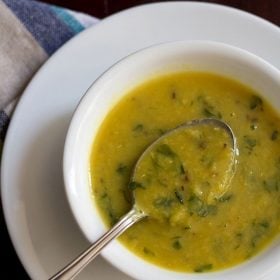
Very tasty recipe
thank you.
Very delicious recipies.
Thanks.
I have been making dal fry using kasturi methi since ages and it tastes like heaven. Once you taste dal fry having kasturi methi in it, you won’t ever like to have a simple dal fry. At my home, dal fry is something that is always made with kasturi methi.. otherwise it’s not eaten by anyone.